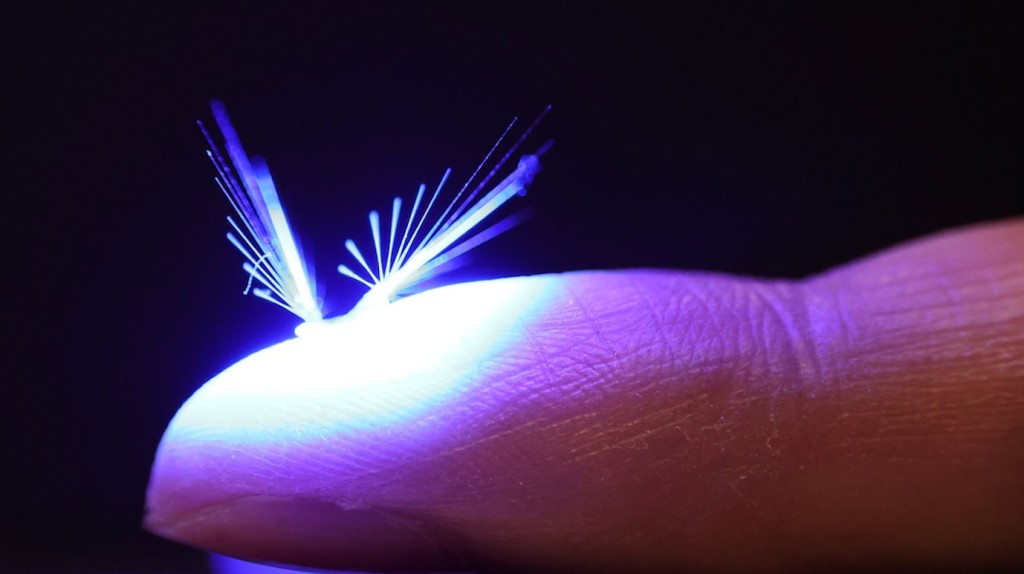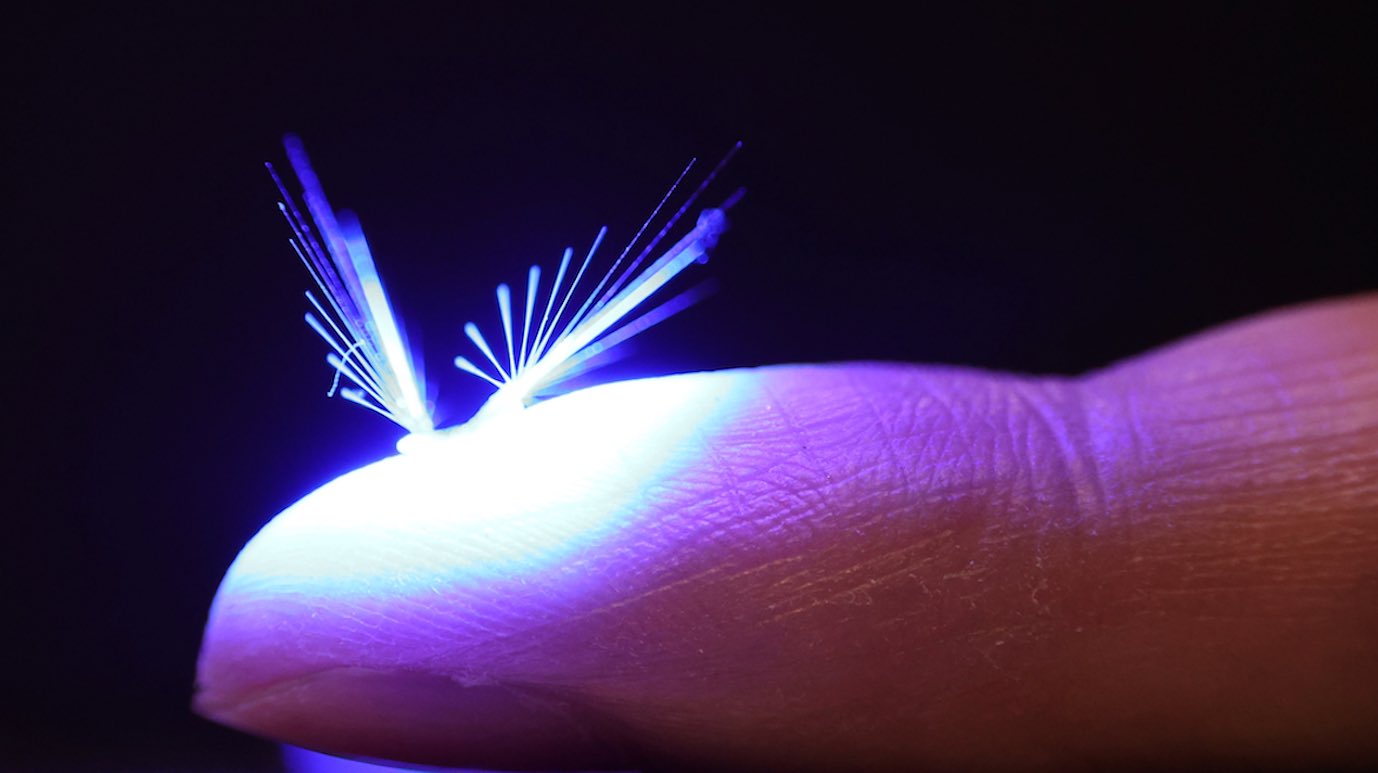
In the future, millions of artificial dandelion seeds carrying pollen could be dispersed freely by natural winds and then steered by light toward specific areas with trees or flowers awaiting pollination.
The genesis for such wild imagination is the recent invention of a polymer-assembly robot that flies by wind, is controlled by light, and inspired by the dandelion seeds we used to blow into the wind when we were young.
A prototype has already been developed by Tampere University’s “Light Robots” group, who use smart materials to create soft-bodied robots capable of moving themselves around via environmental stimuli rather than hard circuitry.
Light enough to be carried by the winds, the robot could be a game changer for almonds, apples, and other flowers in the face of declining pollinator populations.
“This would have a huge impact on agriculture globally since the loss of pollinators due to global warming has become a serious threat to biodiversity and food production,” explains Hao Zeng, the group leader.
A backdrop to this invention is the development of stimuli-responsive polymers which have brought about a wealth of opportunities for next-generation, small-scale, and wirelessly controlled soft-bodied robots.
For some time now, engineers have known how to use these materials to make small robots that can walk, swim, and jump. Last year GNN reported on these soft robotics in the medical field—swarms of robots that can clean teeth, deliver targeted medication, or break up blood clots.
So far though, no one has been able to make them fly.
Dust in the wind
Hao Zeng and colleague Jianfeng Yang are tackling this world-first with a project called FAIRY—Flying Aero-robots based on Light Responsive Materials Assembly.
They have developed a polymer-assembly robot that flies by wind and is controlled by light.
“Superior to its natural counterparts, this artificial seed is equipped with a soft actuator. The actuator is made of light-responsive liquid crystalline elastomer, which induces opening or closing actions of the bristles upon visible light excitation,” explains Hao Zeng.
The artificial fairy developed by Zeng and Yang has several biomimetic features. Weighing a porous 1.2 milligrams, it can easily float in the air directed by the wind.
MORE ABOUT POLLINATORS: Giving Bits of Farmland Back To Nature Does Not Reduce Crop Yields, Landmark Study Shows
“The fairy can be powered and controlled by a light source, such as a laser beam or LED,” Zeng says.
This means that light can be used to change the shape of the tiny dandelion seed-like structure.
The fairy can adapt manually to wind direction and force by changing its shape. A light beam can also be used to control the take-off and landing actions of the polymer assembly.
MORE FROM ROBOTICS: Microscopic Robots Made from White Blood Cells Could Treat and Prevent Life-Threatening Illnesses
“It sounds like science fiction, but the proof-of-concept experiments included in our research show that the robot we have developed provides an important step towards realistic applications suitable for artificial pollination,” said Zeng.
However, many problems need to be solved first. For example, how to control the landing spot in a precise way, and how to reuse the devices and make them biodegradable? These issues require close collaboration with materials scientists and people working on micro-robotics.
WATCH the tiny Fairy fly below…
SHARE This Outrageous Invention With Your Friends…




















